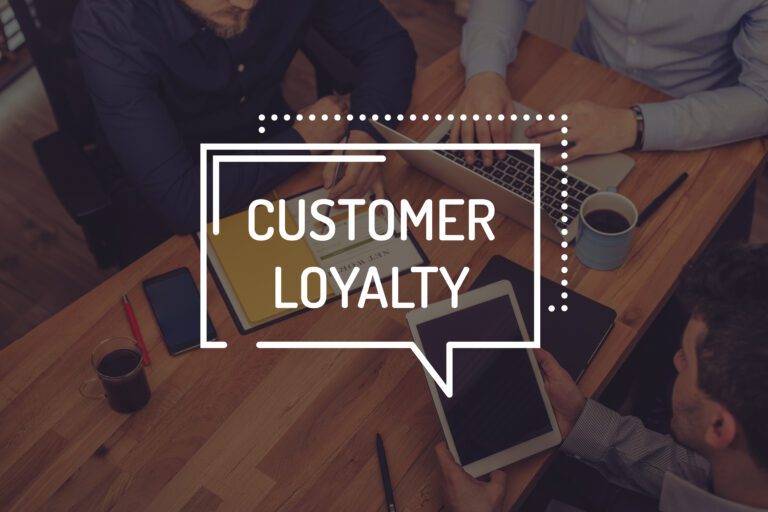June 17, 2021
Loyalty Vs. Rewards: How Data, Not Discounts, Keep Customers Coming Back
In today’s world of super-customized, AI-driven marketing tactics, nurturing customer relationships and creating solid supporters can be tricky. It’s a competitive market, and people are constantly seeking to validate their decision to shop with one brand over another. So, what keeps them coming back? The answer: cost savings and customer experience.
Customers are indeed looking for bargains, but at the same time, they are looking for a shopping experience they’ll remember and want to share. By providing discounts and rewards, businesses can motivate new customers to buy or existing customers to return. However, until those incentives are designed to build brand loyalty, they will yield only a small fraction of their potential value.
Traditionally, loyalty programs give customers a reason to shop while also providing the business with a wealth of consumer information. This data is extremely valuable in driving better business decisions that can result in increased ticket sizes, website visits, and customer referrals. With the correct data implemented the right way, businesses can quickly build trust and hold a consumer’s attention long past their first purchase.
Setting up the framework for a loyalty program is not as simple as pushing a button. However, the one thing that should be simple is the program itself. Whether it’s a short-term or long-term rewards program, convenience and simplicity are a business’s best chance of encouraging customers to take part.
A recent poll suggests that 22% of consumers say they don’t typically sign up for programs if it takes a lot of effort or purchases to start earning rewards. A successful loyalty program is fast-paced; it should not take an excessive amount of time or purchase for a customer to begin reaping the rewards.
Businesses may be asking, what do these programs look like? Is there a difference between building a loyal customer base and just handing out discounts like Halloween candy?
Instant (Short-Term) Rewards
Much like their names suggest, instant rewards or perks that customers can redeem or engage with immediately, such as:
- One-time deals
- BOGO
- Free shipping
- Points-based programs
- Mailing list sign-ups to receive exclusive communication
Many of these may seem familiar. We are often bombarded with similar offers day to day from retailers we frequent, including grocers and drug stores that offer inventory-based and multi-item discounts. Maybe you see them most often from specialty online retailers that allow customers to utilize free shipping and offer gifts with qualifying orders. These rewards can make customers feel valued every time they shop, while also providing businesses the chance to increase ticket sizes. 66% of consumers say they are more likely to make an impulsive purchase in-store or online when presented with cost-savings offers.
Long-Term Rewards
With long-term rewards, customers earn when they spend over time. The more a customer buys or engages with the brand, the more rewards they earn. These programs include store credit cards, tiered memberships, annual subscriptions, or members-only discounts and perks.
Unlike short-term programs, many loyal customers happily sign up and pay annual fees to access: “cash back” incentives, free shipping, and specials. This is especially true when they shop with a business regularly; Costco, Amazon, William Sonoma – Key Rewards, and Albertsons/Safeway-Just For U are all good examples of this. Long-term rewards program members can even become business builders. They are buying more, paying premium prices, and bringing in new customers through referrals.
Know the Difference: Loyalty vs. Rewards
Loyalty programs are designed with two goals in mind. They reward customers for their repeated patronage, and they provide the business with a wealth of consumer information and data.
When designing and implementing a loyalty program, too many companies treat their rewards as short-term promotional giveaways or fleeting specials of the month. When approached this way, the programs may motivate customers to keep coming back but are ineffective in building long-term brand loyalty. Instead, the rewards programs designed to build loyalty are the ones that yield the consumer information for businesses to utilize in their retention strategies.
The goal is then to develop a system through which customers are continually educated about loyalty rewards, thus motivating them to earn more. When customers interact with these campaigns, companies will obtain information that is imperative to the success of the program. Without this data-driven feedback loop, companies are left with anonymous purchases and no direction. Loyalty programs offer invaluable details on the type of products that may be purchased together, whether specific incentives are more effective than others, who customers are, and what they shop for, so you can make smarter decisions about how you market to each customer.
If done right, a loyalty program should benefit consumers and retailers alike. Whether it’s a short-term or long-term rewards program, a marketer’s best chance of maintaining customer loyalty is to understand their habits, tailor products and messaging to meet their expectations for your brand, and give them a reason to return. This way, businesses have the opportunity to build a network of brand ambassadors, establishing the ultimate force in brand loyalty.
Share this:













